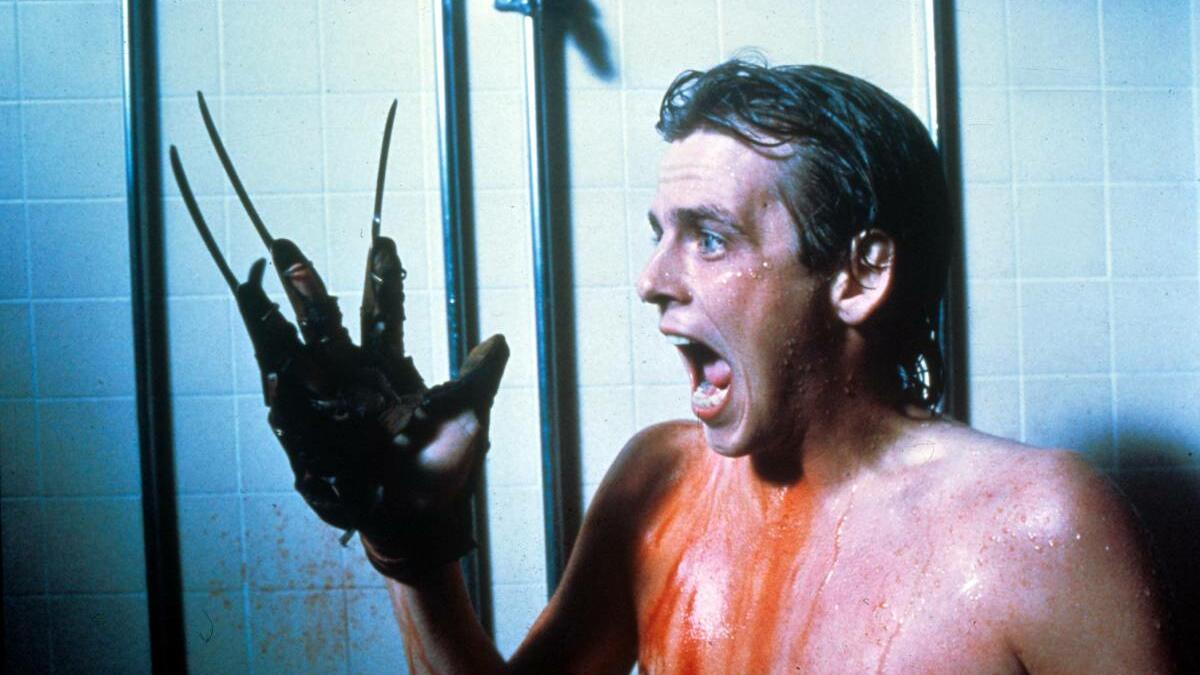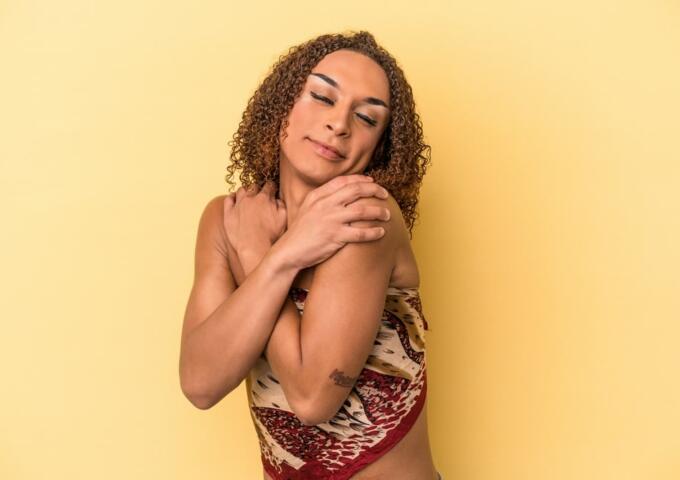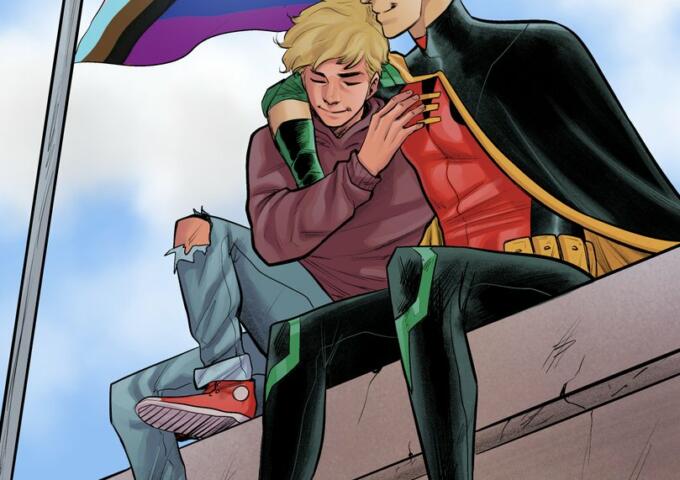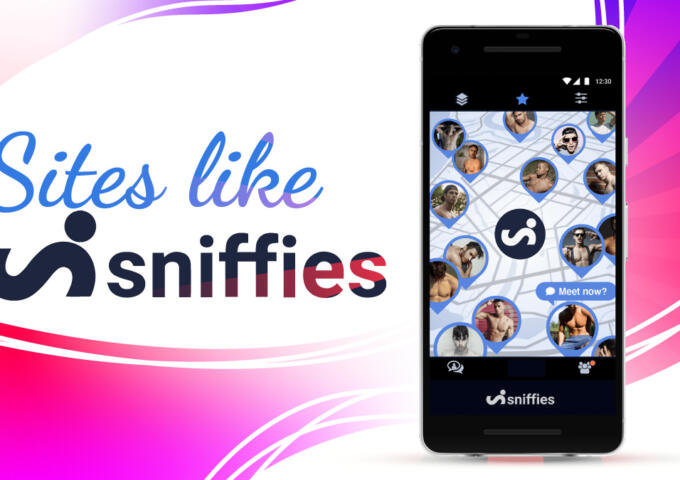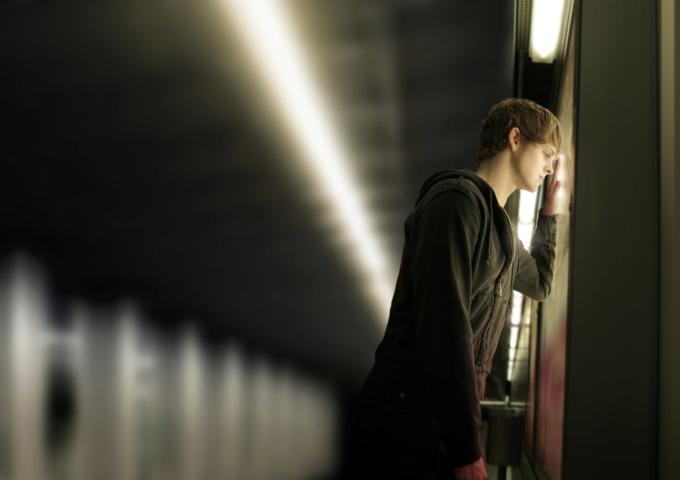As the old saying goes, opinions are like assholes, everyone has one, and you can make money by putting it on the internet. Fan discourse about film franchises is the bedrock of hundreds of content creators. Everyone is a critic thanks to the modern public’s media and entertainment industry knowledge.
And most people are bad at it.
With Halloween right around the corner, it is a perfect time to learn more about how to better analyze media through the lens of Horror movies. If that sounds fun, grab some popcorn and a notepad as we learn about Queer Theory through one of the gayest Horror movies ever: A Nightmare on Elm Street 2: Freddy’s Revenge.
What is Queer Theory?
This will be an extremely basic explanation, but the broad strokes are all you need for now.
Popular movies are a window into the attitudes and norms of the society that made them. Film Studies help us understand those societies and open our eyes to new ways of thinking.
Film Studies are an academic way of viewing and analyzing movies from different perspectives. This can help people gain a deeper understanding of a film and promote conversation. There are many subcategories such as Feminist Theory, Psychoanalytical Theory, and Marxist Theory to name a few.
Queer Theory, or Queer Cinema Studies, is a way of analyzing films from a non-heteronormative perspective. This can mean looking at and critiquing a movie’s themes around Queer identity and representation, such as the tired trope of the effeminate villain.
Queer coding and a film’s humor, such as lazy gay jokes, go a long way to showing what people think is acceptable at a given time. Just think about how recently “the ‘f’ slur” became “the ‘f’ slur”, considering how often the full homophobic slur is used in teen comedies from only a decade ago.
That being said, context is very important. Something that landed in theaters in the mid-1980s, aka Peak-Reagan, is going to feel very different from the Gen-X late 90s.
Another aspect is digging into a film’s subtext, the meaning that bubbles underneath the surface. The idea of having dozens of popular movies centered on gay relationships is bewilderingly new. Until recently, any Queerness in a film had to sneak by as subtext.
Think about movies like Schumacher’s Batman & Robin or Scott’s Top Gun. Movies where people watched and said “this feels kind of gay.” Whether the filmmakers intended to make a stealthy gay flick or not doesn’t matter.
It becomes a jumping-off point to discussing bigger issues around Queerness and culture.
Why Horror?
The Horror genre is, like, super gay.
Horror not only has a massive fanbase in the LGBTQ+ community, but many of the artform’s biggest creators are queer. Arguably, there would be no Horror or SciFi if it wasn’t for queer folks.
The writer of Frankenstein, Mary Shelly, was a queer woman who hung out with gay icon Oscar Wilde and Lord Byron, whose sexuality can be best classified as “Yes.”
Shelly created what is known as Gothic Horror, along with Science Fiction, with her masterpiece. Wilde quickly followed with The Portrait of Dorian Gray.
Another classic of Gothic Horror is Bram Stoker’s Dracula. While Stoker became a virulent public homophobe in later life, his love letters to Walt Whitman portray a man battling with his desires.
When looking at Dracula through that lens, the themes of seductive influence and Christianity hit differently. It is clear Stoker was working through some stuff when he wrote his famed Vampire novel.
Horror is meant to be transgressive and taboo, reflecting the fears and anxieties of the time. This can lead to insanely offensive moments, like the ending of Sleepaway Camp, or strengthen harmful stereotypes.
That doesn’t mean Queer Theory is just a way to point out problematic media.
It can also offer catharsis for feelings of isolation and vulnerability. Final Girls, the woman who bests the villain, are queer icons for showing strength in feminity.
LGBTQ+ Horror fans have a soft spot for monsters and ghouls who creep on the outskirts of society. When growing up in a world that sees their existence as a threat, it’s easy to identify with the villains.
The “Misunderstood Monster” strikes at the heart of the Queer experience. Frankenstein’s Monster is despised and feared for just existing, something very relatable to young people who are questioning their sexuality.
There are hundreds of scary movies that are either explicitly or subtextually Queer, but there is one movie that became infamous for “unintentionally” becoming the first gay Horror blockbuster.
Believe me; those quote marks are doing a lot of heavy lifting.
One, Two, Freddy’s Coming for You…
Spoilers for A Nightmare on Elm Street 2: Freddy’s Revenge Ahead
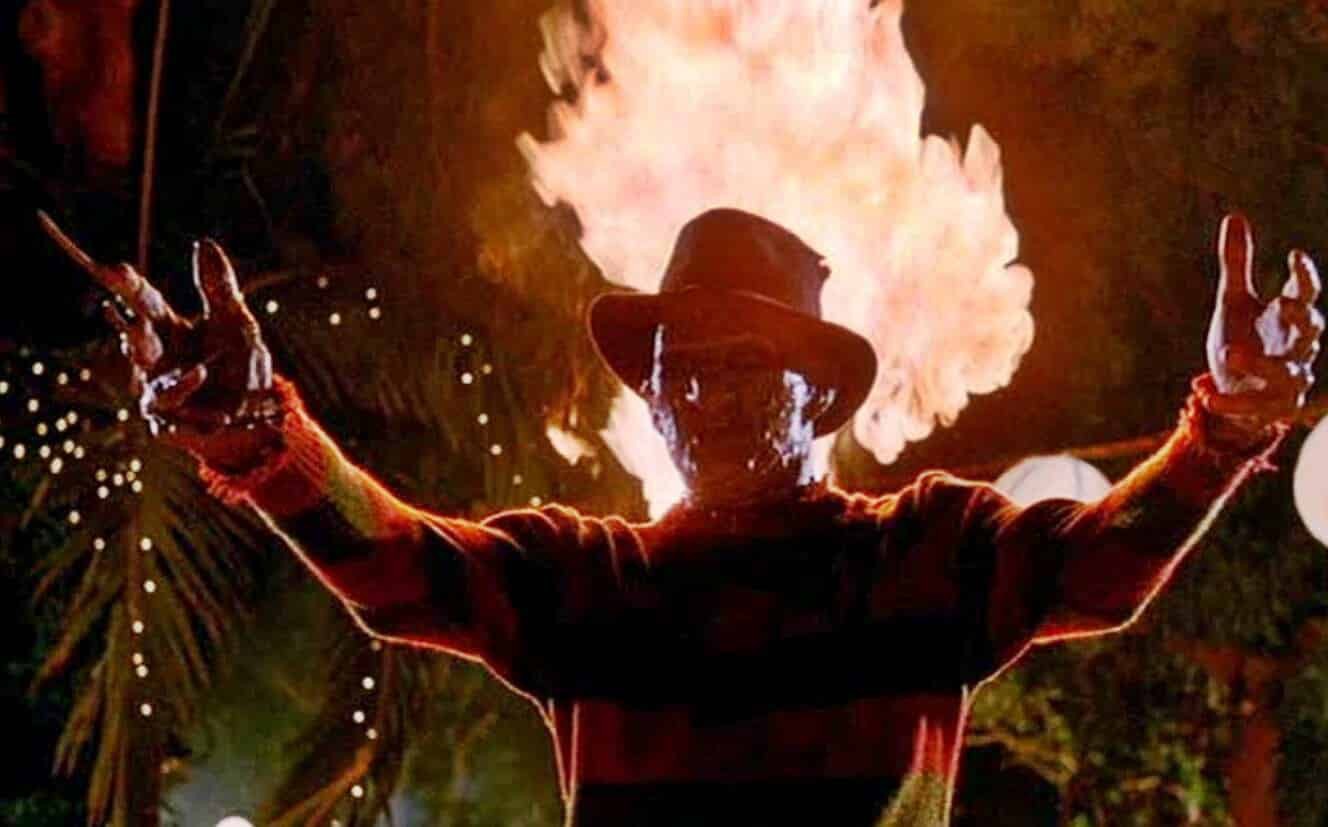
Calling Wes Craven’s 1984 A Nightmare on Elm Street a hit would be the understatement of the century. Overnight there was a new cultural icon in Freddy Krueger, and fans were screaming for a sequel.
As with most Horror franchises, the green light was given almost instantly. A Nightmare on Elm Street 2: Freddy’s Revenge was released just shy of a year later.
Nightmare 2 follows Jesse, a young man whose family has moved into the same house OG Final Girl Nancy lived in five years earlier. Krueger begins tormenting Jesse in an effort to possess him and cross over from the dream world to ours.
From the description above, it sounds like a straightforward follow-up. With the production company, New Line Cinema, being referred to as “the house that Freddy built” it was smart to stick to what works.
However, the final film was something else entirely. Nightmare 2 is so stuffed with gay subtext it is arguably just text.
And we are here for it.
Starting with the film’s protagonist, Mark Patton’s Jesse, we get our first Final Boy. Jesse is sweet, sensitive, and beautiful. Seriously, Jesse is a goddamn snack. His soft features and high-pitched scream give him a vulnerability not usually seen in male leads.
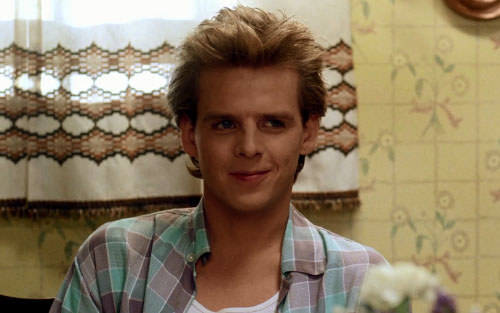
While there is a female love interest in Lisa, played by Kim Myers, she feels like an afterthought until the ending. She throws herself at Jesse, who comes off as uninterested and occasionally uncomfortable with her.
The real love story is between Jesse and his hunky best friend Grady. Robert Rusler plays Grady as a lovable jock that has real chemistry with Jesse. When Jesse can’t fight what is inside, he abandons Lisa mid-make-out session, sneaks into Grady’s room, and crawls into his bed.
A crazed and sweat-covered Jesse tells his shirtless buddy that “something is trying to get inside of his body” in a scene that, out of context, could be a heartfelt coming out. Jesse can’t control his urges and needs the man he trusts most.
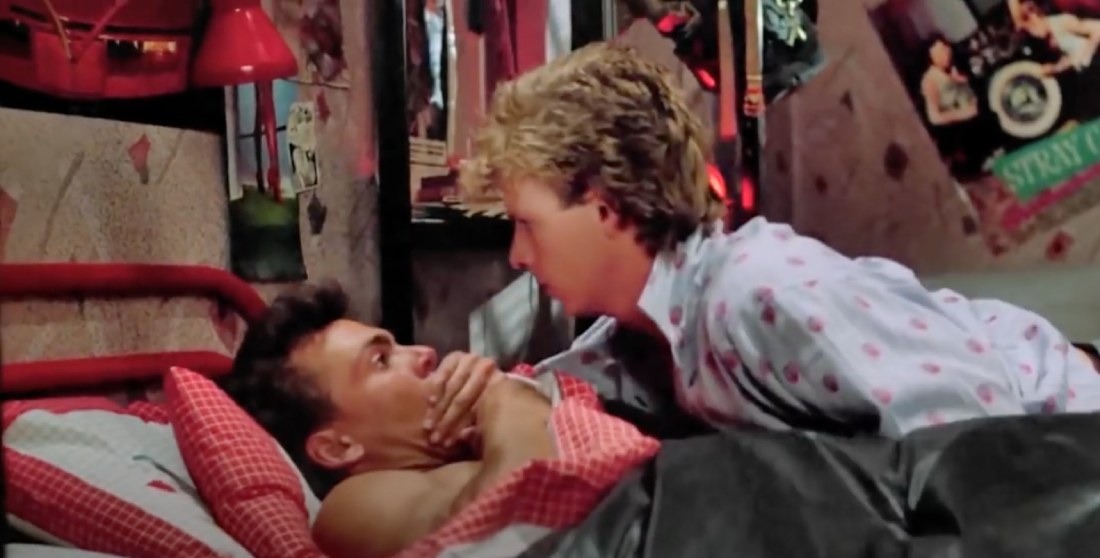
The Jesse/Grady relationship is actually one of the more subtle flavors of gay in this film. There’s Jesse’s gyrating, butt-bouncing, popping-toy-boner dance as he cleans his room to “Touch Me (All Night Long)”.
There’s also the fact that Patton was sweaty and shirtless through most of the film, with repeated shots of him writhing in bed while he dreams of Freddy.
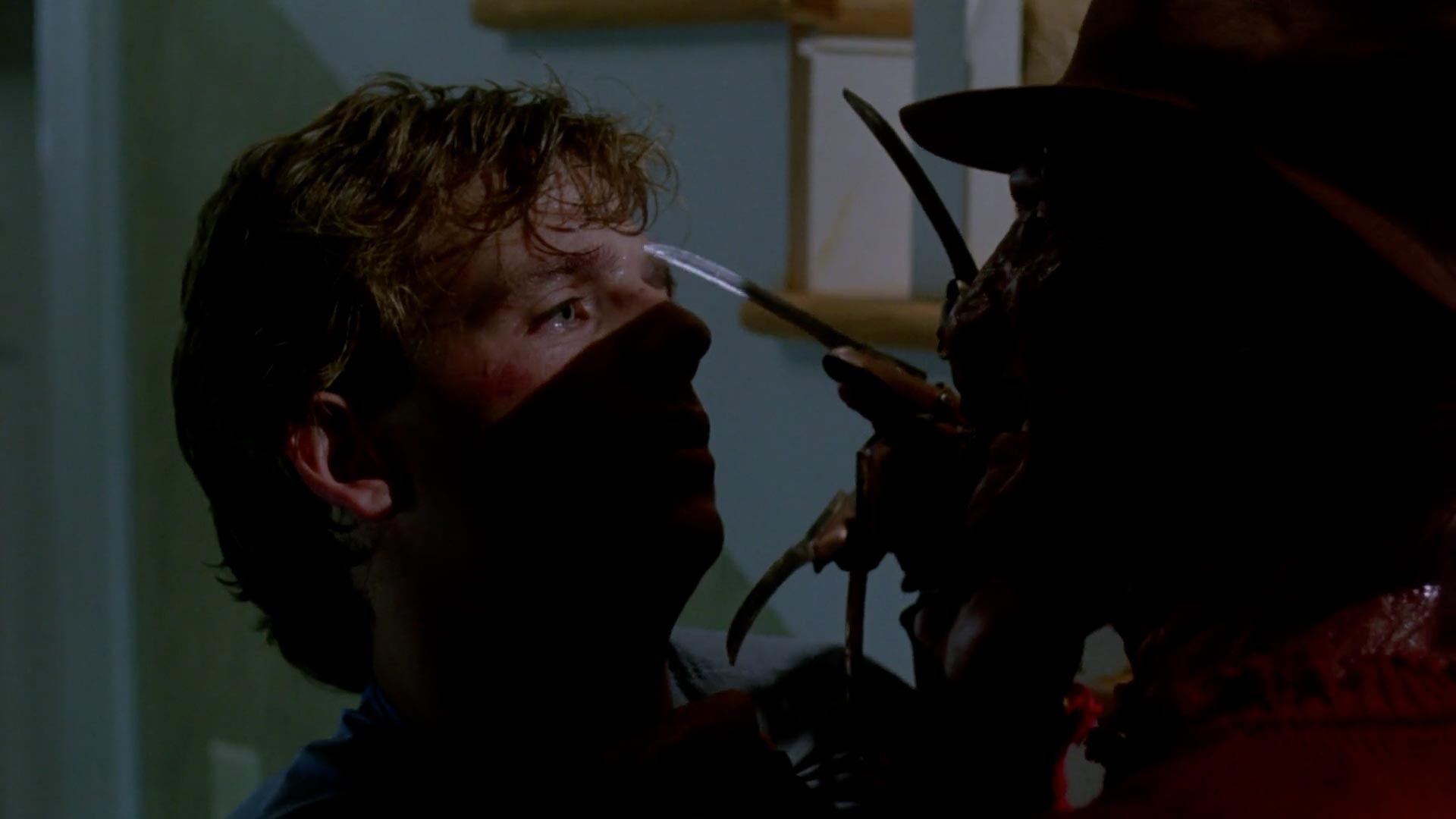
Freddy is getting in on the action, too. The first encounter between him and Jesse is intensely erotic, with Freddy sliding his claws around young and nubile Jesse’s mouth.
Freddy, despite looking like a fumbled pizza, is incredibly seductive. The absolute legend that is Robert Englund deliberately played the scene to be intimate. In an interview for the Shudder Documentary Scream, Queen: My Nightmare on Elm Street, Englund recalled that scene.
“I remember with Mark [Patton],” says Englund, “caressing his face, I remember asking if it was okay if I make it, um, I believe the word is ‘homoerotic’… Mark and I are nose-to-nose. I’ve got the claw on him. In one of the pieces of coverage, I rim his mouth.”
Englund continues “I’m playing with oral there. I’m playing with a lot of symbolism there. Mostly, for me, it was playing disfigured Freddy against Mark’s beauty. Which is what? Beauty and the Beast.”
Even with adding a “claw-job” to the mix, there is still a gay element that tops it all. Ladies and gentlemen, we now go to the “Leather Daddy Coach Shower Whipping” scene.
Springfield High School’s Phys Ed teacher, Marshall Bell’s Coach Schnieder, is the only explicitly gay character in the movie. Grady tells Jesse that Coach goes to “queer S&M joints downtown.”
One night, under Freddy’s spell, Jesse sleepwalks into said S&M bar and is intercepted by a leather-clad Schnieder. No one likes running into their teachers outside of school, but this is ridiculous.
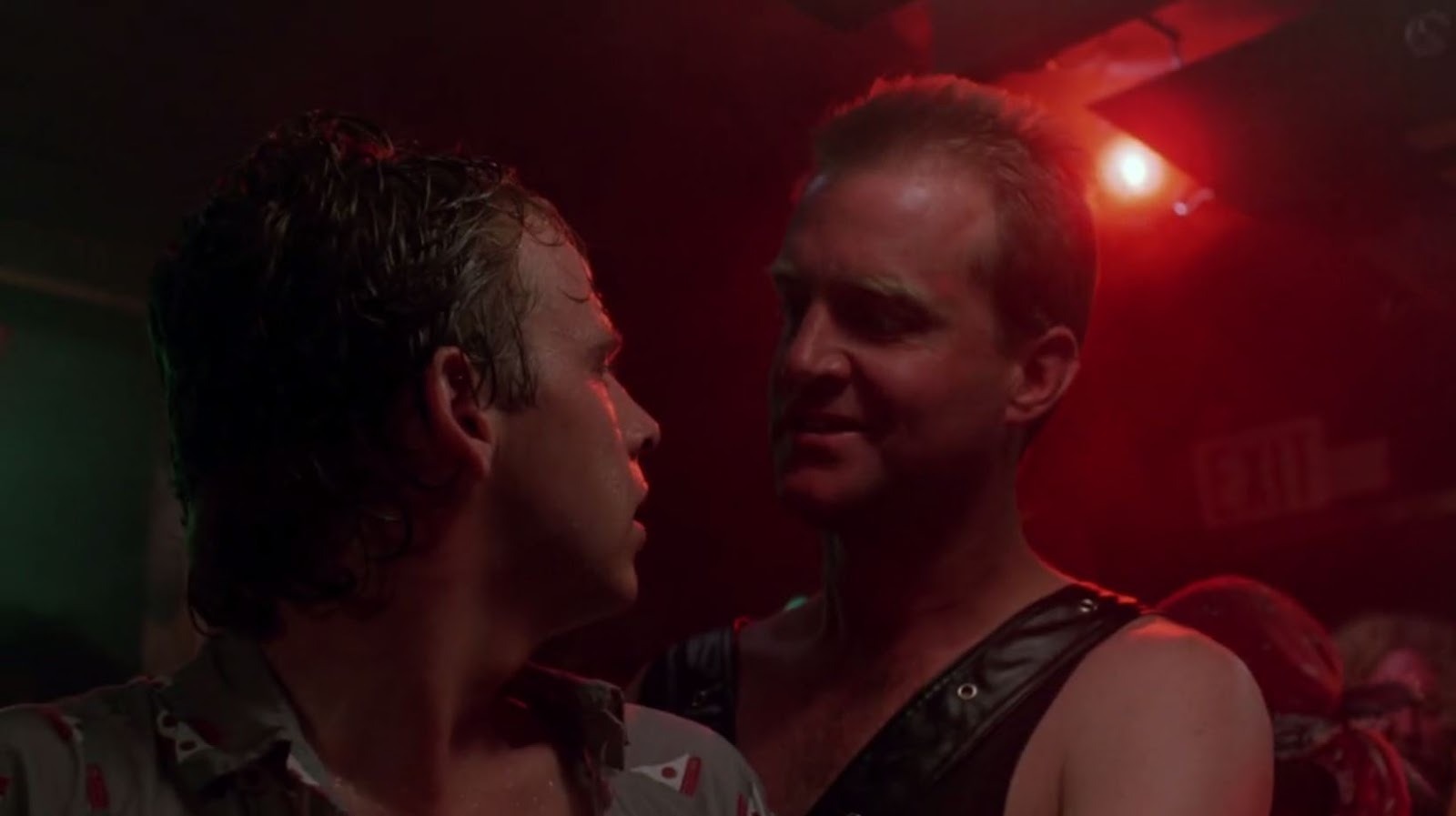
Schnieder brings Jesse back to the school gym to run laps. As Jessie showers off, Schnieder is assaulted by flying balls and bats before being dragged by jump ropes into the showers, tied up in an “X” pose, stripped naked, and has his ass whipped red by haunted towels.
Many of the actors were very aware of the gay and sexual undertones of the film and, to their credit, were down to clown. Most of the crew was gay and were excited to work on this groundbreaking film.
Turned out they were the only ones in on the joke.
Fallout, Boy
To be clear, Nightmare 2, is not a rediscovered gem with a coat of rainbow paint slapped on. As soon as it was released, Nightmare 2, was “the gay Freddy movie.”
Audiences knew it, and celebrated this brave and progressive film. Thoughtful discussions were had around the growing AIDS epidemic and the treatment of gay people in cinema and society.
Just kidding.
Nope, this was Reagan-era America at the beginning of the AIDS crisis. Gay men were the bogeymen of the day.
Outside of a glowing review from the queer-periodical The Advocate, the film was torn to shreds for its gayness with homophobic hate mail being sent to Patton. Self-described fans and critics hated the new movie, making it one of the original “movie bad because gay” flicks.
While director Jack Sholder claims to this day he had no idea there was any queer subtext to his movie, writer David Chaskin distanced himself from the film and blamed any hint of gay on Patton.
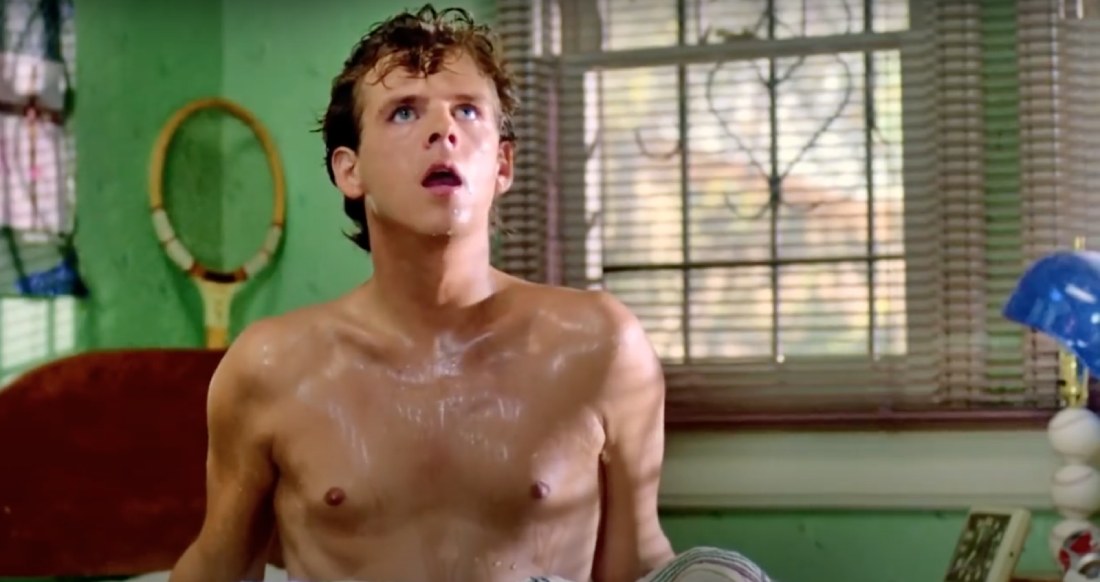
Patton was not out publicly and, along with losing his partner to AIDS, the film industry shutting him out, and the audience reception, he was on the edge. Chaskin’s shitty comments were the straw that broke the camel’s back.
Patton vanished for almost 30 years before the 2010 documentary Never Sleep Again: The Elm Street Legacy tracked him down for an interview.
Chaskin went on to deny that he wrote any gay subtext into the film for decades. When it became adopted as a Queer cult classic, he finally admitted the “Twink who is tormented by a Leather Daddy and a dream demon” movie was meant to be gay.
Not to make all of this about Chaskin, but it should be noted in 2007 he gave an interview to Bloody Good Horror and had this to say:
“Yes, there was certainly some intentional subtext, but it was intended to play homophobic rather than homoerotic. I thought about the demographics for these types of films (young, heterosexual males) and tried to imagine what kinds of things would truly frighten them to the core. And scary dreams that make them, even momentarily, question their own sexuality seemed like a slam dunk to me.
If you really wanted to have fun, one might argue that the entire movie is a metaphor — Jesse is, in the end, finally able to control the monster inside him (his latent homosexuality) with the love of a good woman. Maybe they should show this film at one of those evangelical deprogramming sessions where they try to “fix” gay people into regular Americans.
That said, there were certain choices that were made (e.g., casting) that, I think, pushed the subtext to a higher level and stripped away whatever subtlety there may have been. To this day, Jack Sholder says he read no such subtext into the script. It must have been by osmosis. At any rate, he should have seen it coming – when we opened in New York, we got a rave review in The Advocate.”
Thanks, Dave. Very cool.
Let’s Get Down to Business
So why choose Nightmare 2 to explore Queer Theory? Partially because it’s pretty easy to dissect, as many of the gay aspects are plain as day.
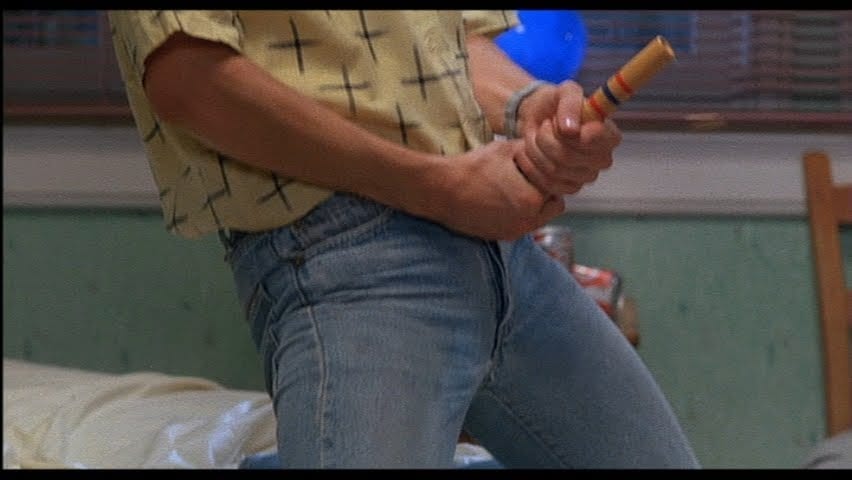
To go deeper, questions need to be asked. Questions like “what is the film trying to say?” or “What about the time it was made during affects the movie’s message?”.
A big, juicy question is “what does Freddy represent?”
Is Freddy meant to stand in for the toxicity of repressed urges or self-loathing in the LGBTQ+ community? Does Krueger represent the fear of being gay or how the world will react if you come out?
Monsters are a great totem of analysis and dissection, as they are meant to represent the fears and superstitions of a culture. Having the grotesque Freddy, a confirmed child molester/murderer, as an avatar for being gay is stomach-turning but says a lot about how late 20th-century America viewed gay men.
What does Jesse’s story say about the gay experience? He hides his pain from his parents, who ignore the problem until it becomes too big to dismiss. Even when they suspect something is off, Jesse’s parents see it as a problem that needs correcting, not something to empathize with.
The film opens in Jesse’s dream, where he sits alone on a crowded school bus. His demeanor and look are uncomfortable and awkward. Does this represent how Jesse sees himself as a closeted gay teen?
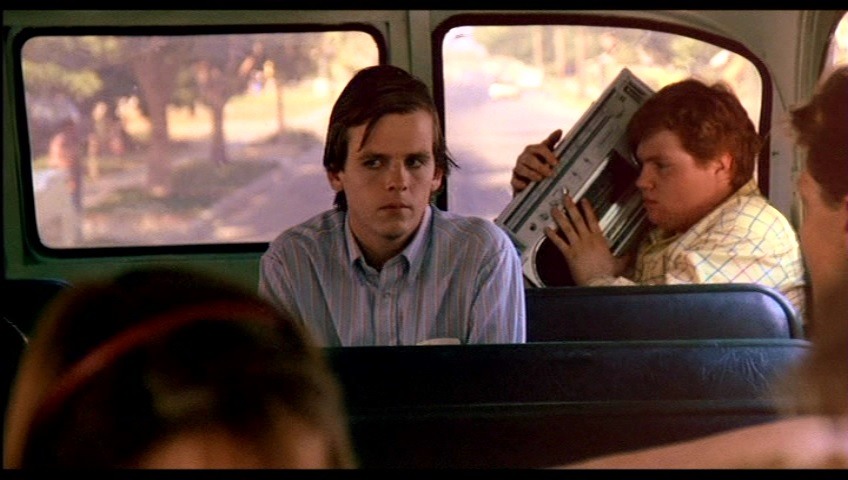
Jesse tries to fit in and hook up with Lisa, but the monster inside him won’t allow it. When Krueger takes over, Jesse winds up at a gay bar where he ends up in a dangerous situation. The only place he feels safe is in Grady’s bedroom.
With all of the eye candy displayed by Patton and Russler, what does this film say about the 80’s Horror conventions of objectifying women? Is this a case of the male gaze versus the male gays?
When taking in all of the historical context, the tropes and conventions of 80s horror, and the visual language of Nightmare 2, there are endless avenues to wander down.
The only hiccup comes from the idea of authorial intent.
What were the filmmakers trying to say here? How much was intentional and how much was a happy accident? The fact that the director was oblivious to the gay aspects of his film and the writer changed his tune every few years makes this difficult.
Thankfully, the concept of “Death of the Author” can help. “Death of the Author” basically says authorial intent doesn’t matter and the viewer decides the meaning of a piece. DoA doesn’t work as well in every instance but can clean things up here.
Kids, Try This at Home
Learning about Queer Theory, along with other parts of Film Studies, is an exciting way to evaluate popular media and gain a deeper understanding of art. Watching films analytically can lead to enlightening conversations and help you articulate your feelings on a film.
When revisiting an old favorite or seeing a new film, ask yourself some of the questions above about why the movie you’re seeing is the way it is. You may appreciate them more.
If you’re a Horror nerd and want to learn more about the connections between Horror and the LGBTQ+ community, watch Shudder’s new series Queer for Fear. If you want to dive deeper into Queer Theory and Horror, read Harry M. Benshoff’s Monsters in the Closet. For learning more about Film Studies in general, check out Lindsay Ellis’ The Whole Plate series.
It is a shame Nightmare 2 has had such a tumultuous ride. It’s a genuinely good horror flick with great performances and killer Special Effects. Thankfully, queer evisceration aficionados saw what made it special.
Now you can, too.
